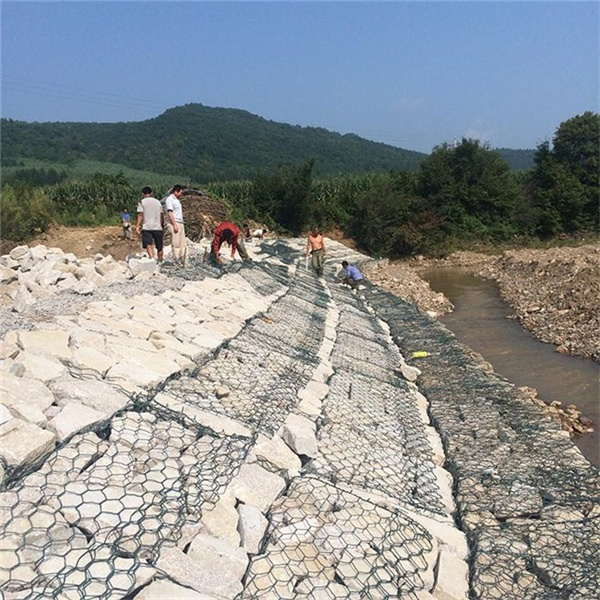නොවැ. . 16, 2024 20:41 Back to list
gabion prices
Understanding Gabion Prices A Comprehensive Guide
Gabions, often seen as sturdy wire mesh cages filled with stones, have gained prominence in various construction and landscaping projects. Initially used for erosion control and stabilization, these versatile structures are now popular for decorative purposes as well. Understanding gabion prices is crucial for anyone looking to utilize them in their project, whether it’s a small garden design or large-scale civil engineering work. In this article, we delve into the factors that influence gabion prices, typical costs, and how to budget for your next project.
Factors Influencing Gabion Prices
1. Material Quality The price of gabions can vary significantly based on the materials used. High-quality galvanized steel or PVC-coated wire mesh tends to be more expensive but offers better durability and resistance to corrosion. Cheaper alternatives might save on initial costs but can lead to more significant expenses due to frequent repairs or replacements.
2. Size and Dimensions Gabions come in various sizes, with larger units generally costing more. Custom-sized gabions tailored to specific project needs may also incur additional fees. For instance, a standard 1-meter by 1-meter by 1-meter gabion might range from $50 to $100, while larger units can escalate in price rapidly.
3. Type of Fill Material The cost of the stones or other fill materials used within the gabions can also affect overall pricing. While river rock or granite is commonly used, prices can fluctuate based on availability and transportation costs. Additionally, specialized fill materials, such as recycled concrete or decorative stones, may further impact the price.
4. Design Complexity The complexity of the design will play a significant role in pricing. Simple, straight-wall structures tend to be more economical, while intricate designs with curves, terraces, or patterns will require more labor and skill, hence raising costs.
5. Labor Costs Depending on your location, labor costs can vary widely. If you opt for professional installation, hiring experienced contractors will add to your expenses but potentially save time and ensure structural integrity. DIY projects can reduce costs but require you to have the necessary skills and tools.
gabion prices

Typical Gabion Prices
While the overall pricing can differ based on the mentioned factors, estimating a ballpark figure can provide a clearer understanding. Generally, you can expect to pay anywhere between $50 to $120 per cubic meter for standard gabion materials, including the cages and stones. Installation costs, depending on complexity, may add an additional $30 to $70 per hour for labor.
For instance, a straightforward gabion wall using pre-assembled units could run about $250 to $500 for a small garden project. Conversely, large-scale projects involving extensive landscaping or erosion control could easily reach thousands of dollars, especially if custom designs and specialized materials are utilized.
Budgeting for Gabion Projects
When budgeting for a gabion project, it’s essential to consider all aspects that contribute to the total price. Start with a detailed plan that outlines the desired size, type, and intended use of the gabion. Gather multiple quotes from suppliers and contractors to understand your options better.
Additionally, consider the long-term benefits of investing in higher-quality materials. While the initial costs might be higher, durable gabions can last for decades with minimal maintenance, providing significant savings over time. Always factor in potential maintenance costs as well, such as cleaning or replacing fill material.
Conclusion
Gabion prices are influenced by a multitude of factors ranging from material quality to labor costs. Understanding these elements can help you make informed decisions for your project, aligning your budget with your design goals. Whether you're looking to stabilize a slope, control erosion, or create an attractive landscape feature, planning ahead with a clear budget can ensure that your investment in gabions pays off in both functionality and aesthetics. Always consult with suppliers and professionals to navigate the specifics of your project, ensuring you choose solutions that best fit your needs and budget.
-
Visualizing Gabion 3D Integration in Urban Landscapes with Rendering
NewsJul.23,2025
-
The Design and Sustainability of Gabion Wire Mesh Panels
NewsJul.23,2025
-
The Acoustic Performance of Gabion Sound Barriers in Urban Environments
NewsJul.23,2025
-
Mastering the Installation of Galvanized Gabion Structures
NewsJul.23,2025
-
Gabion Boxes: Pioneering Sustainable Infrastructure Across the Globe
NewsJul.23,2025
-
Custom PVC Coated Gabion Boxes for Aesthetic Excellence
NewsJul.23,2025
-
Installation Tips for Gabion Wire Baskets in Erosion Control Projects
NewsJul.21,2025






